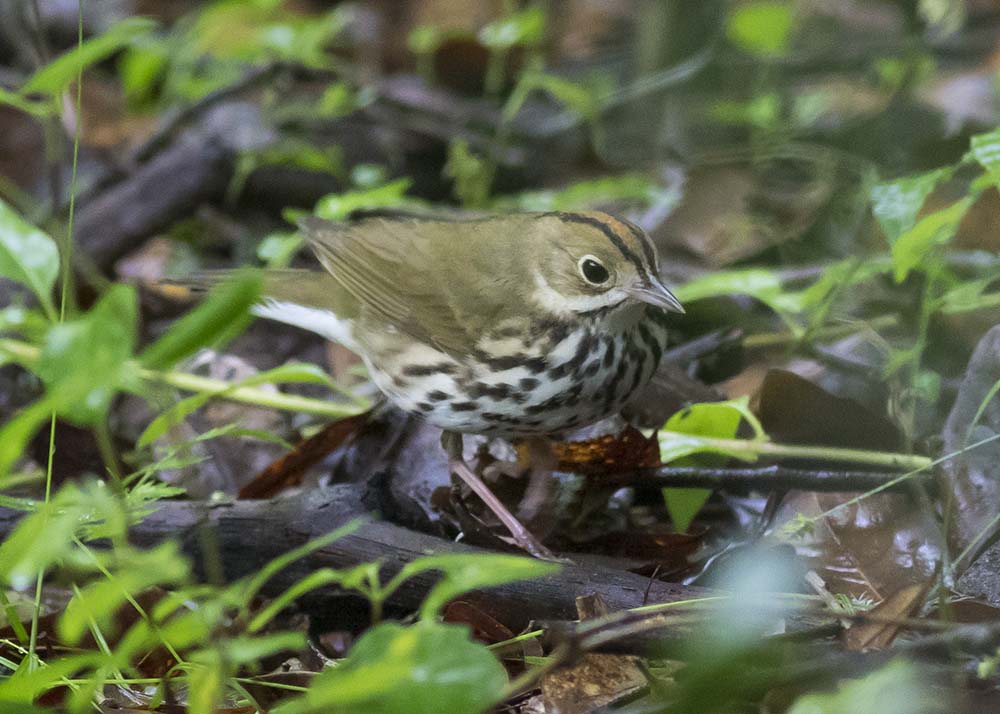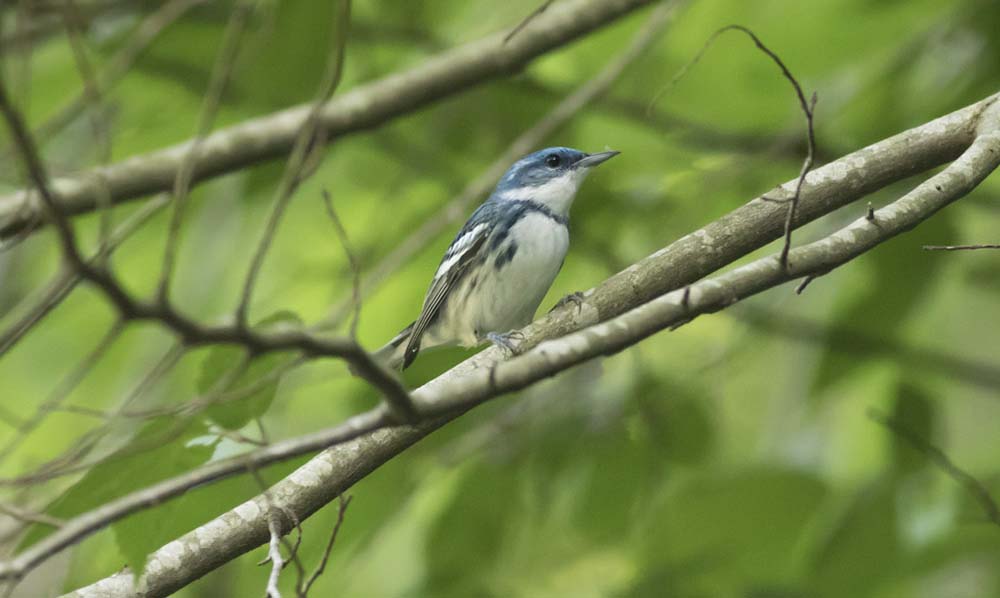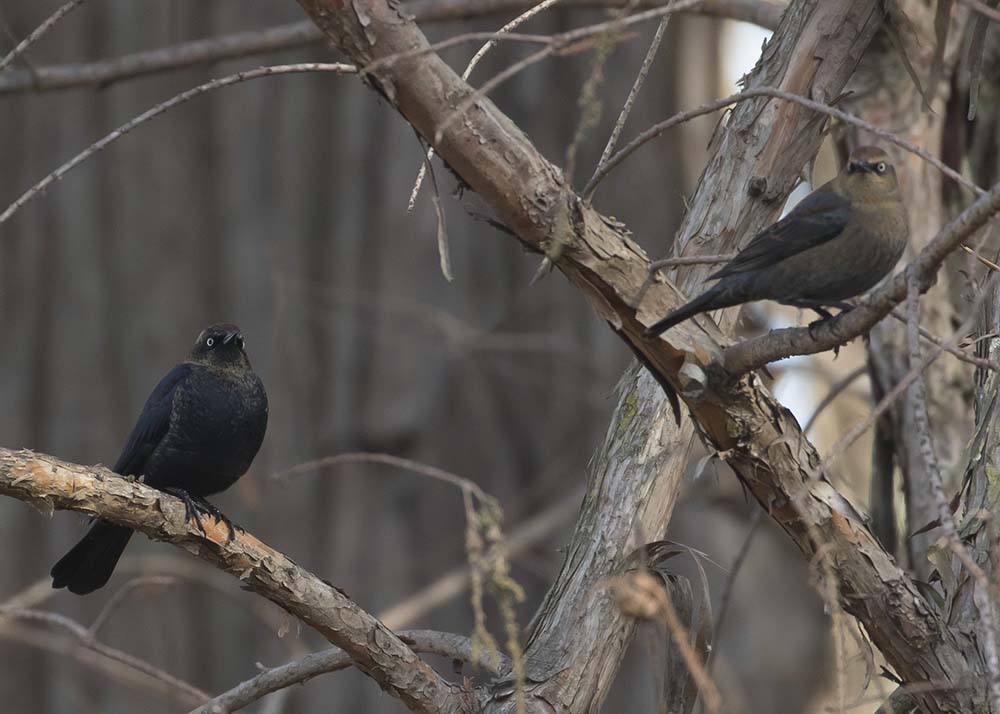
Top 10 spring migration destinations for birding
By Angela Minor | Photos by Michael Todd
When warm weather arrived at my grandparents’ north Alabama home, the ice cream maker appeared on the patio. It was time to hand crank some homemade deliciousness. This seemingly endless process, however, was always delayed by some mysterious bird in the nearby field. Granddaddy would motion for my brother and me to stop cranking and listen.
“Bobwhite is saying his name! Hear him?” he’d exclaim. While I wasn’t exactly sure if I heard anything, or why a bird would be talking in words for that matter, those are now fledgling memories of my life as a birder.
“Alabama is the fifth most biodiverse state in the U.S.,” says Greg Harber, Birmingham Audubon board member. “This translates into great plant and animal diversity, including the state’s bird populations. Its location on the northern Gulf coast underscores Alabama’s importance to Neotropical migrants during spring and fall.”
Dr. Geoffrey Hill, ornithology professor at Auburn University and president-elect of the Alabama Ornithological Society, says, “Alabama has thousands of miles of low-traffic country roads through diverse habitats where birding is both productive and relaxing.” He then adds, “We also have some of the most beautiful and ‘birdiest’ white sand beaches in the world!”

Walls of Jericho Forever Wild tract & Skyline WMA
More than 40,000 combined acres of protected land in Alabama’s northeastern corner is a spring warbler destination. Contiguous undeveloped forests, woodland gaps and grassy coves, mountains, karst formations, and some of the highest water quality streams in the state create rich habitat for birds, endemic invertebrates, native freshwater fish, herpetofauna and cave-dwelling species.
Site No. 41 (Northeast Loop) of the North Alabama Birding Trail system offers easy access in this area.
Bird list highlights: Cerulean Warbler, Hooded Warbler, Chestnut-sided Warbler, Blue-winged Warbler, Kentucky Warbler, Worm-eating Warbler, Louisiana Waterthrush, Scarlet Tanager, Wood Thrush, Ruffed Grouse (resident)
Wheeler National Wildlife Refuge
“Winter brings thousands of ducks, geese, and cranes to Wheeler NWR, which hosts the largest wintering population of federally endangered Whooping Cranes,” says Harber. Following this, spring migration at the edge of the Mississippi Flyway is rich with warblers, vireos, and other passerines on their way north. Three hundred bird species, 47 mammalian species, 75 species of reptiles, 115 fish species, and dozens of invertebrates make this region of Alabama’s Tennessee River Valley their home.
Multiple Central Loops on the North Alabama Birding Trail system access the Wheeler NWR.
Bird list highlights: Savannah, Chipping, Song, Swamp, and Field Sparrows; Summer and Scarlet Tanager; Prothonotary, Blackpoll, Bay-breasted, Pine, Tennessee, and Palm Warblers; Common Yellowthroat; Ruby-crowned Kinglet; Tree, Northern Rough-winged, and Bank Swallow; Horned Lark; Great-crested Flycatcher; Greater and Lesser Yellowlegs; American Coot; Double-crested Cormorant.

Bankhead National Forest
The 180,000 acres of national forest in three northwestern counties are classified as one of American Bird Conservancy’s “500 Most Important Bird Areas in the United States.” The Sipsey Wilderness and Brushy Lake Area are included in this contiguous forest, with patches of virgin timber, dramatic canyons, gentle waterfalls, and scenic waterways.
Enjoy sites No. 14 and No. 15 (Northwest Loop) of the North Alabama Birding Trail system.
Bird list highlights: Cerulean Warbler, Scarlet Tanager, Summer Tanager, Rose-breasted Grosbeak, Ovenbird, Hooded, Kentucky, and Worm-eating Warblers, Blue-gray Gnatcatchers, Acadian Flycatcher, Great Crested Flycatcher, Eastern Wood Pewee, Rusty Blackbird (winters here, migrates north early spring), Northern Bobwhite (resident), Red-headed Woodpecker (resident).
Key Cave National Wildlife Refuge
Unique ecosystems at this small 1,060-acre refuge protect endangered cavefish, two blind crayfish species, 40,000 endangered Gray Bats, and 160 species of birds. Habitats of upland hardwood forests, native warm-season grasses, and oak-hickory forests sit atop the critical groundwater recharge zone for the area. Site No. 9 (Northwest Loop) of the North Alabama Birding Trail is in this refuge.
Bird list highlights: Northern Bobwhite, Eastern Bluebird, Field Sparrow, Grasshopper Sparrow (state’s highest density), Dickcissel (state’s highest density), Eastern Meadowlark, Northern Harrier, Short-eared Owl.

Talladega National Forest
(Shoal Creek/Talladega District & Oakmulgee District)
This Important Bird Area (IBA) of 391,000 acres is divided into two districts across central Alabama. They protect what remains of an ancient forested ecosystem that once stretched from Texas to the Carolina and Virginia coasts. Large variation in elevations, multiple rivers, edge habitats, bottomlands, open glades, and other environments make these two locations busy highways for both spring and fall migration.
Find multiple sites with hundreds of miles of trails in the southeastern portion of the Appalachian Highlands Birding Trail system, and the West Alabama Birding Trail system respectively.
Bird list highlights: Black-throated Green Warbler, Blue-headed Vireo, Indigo Bunting (important migration patterns), Blue Grosbeak, Yellow-breasted Chat, Red-cockaded Woodpecker (rare, resident), Red Crossbill (nomadic/(winters here, migrates north early spring), Bachman’s Sparrow (resident), Barred Owl (resident).
State Cattle Ranch/ Black Belt IBA
Located in the Black Belt, this 4,600-acre grassland tract is a botanically unique area similar to the tall grass prairies of the American Midwest. Purchased via the Forever Wild Program, efforts to re-establish native grasses benefit numerous grassland bird species.
Also, a suite of long-legged waders frequent the property’s numerous ponds. The M. Barnett Lawley Forever Wild Field Trial Area is open to birders (who should make prior arrangements with the site’s manager).
Bird list highlights: American White Pelican, Great Blue, Green, and Little Blue Herons, Snowy and Great Egrets, Wood Stork (summer), Pied-billed Grebe (resident), LeConte’s Sparrow (winters here, migrates north early spring), Henslow’s Sparrow, Painted Bunting.

Eufaula NWR
This is the destination for waders, waterfowl, shorebirds, marsh birds, hawks, and Neotropical migrants riding the Mississippi and Atlantic Flyways. Both banks of the Chattahoochee River on the Alabama-Georgia state line, as well as islands, open water, palustrine wetlands, and upland forests, make this location a critical migratory stopover and breeding site.
Five Wiregrass Birding Trail sites provide access into this area.
Bird list highlights: Sandhill Crane, King Rail, Bald Eagle, Snow Goose, Northern Shoveler, Sharp-shinned Hawk, Broad-winged Hawk, Wood Duck (resident).
Conecuh National Forest IBA
As part of a 1 million-acre conservation corridor extending into the Florida panhandle, this region protects an 84,000-acre southern Longleaf Pine ecosystem including river floodplain hardwood forests. In addition to miles of hiking trails, there are many options for birding by water as the area is also rich with wetlands, bogs, creeks, and swamps.
Auburn University’s Solon Dixon Forestry Education Center is located within the national forest. Birders can schedule visits at the headquarters.
Bird list highlights: Red-cockaded Woodpecker (colony), Bachman’s Sparrow (global species of concern), Henslow’s Sparrow, Northern Bobwhite (global species of concern), Painted Bunting, Barred Owl, Summer Tanager, Yellow-breasted Chat, Wild Turkey, Yellow-billed Cuckoo
 Grand Bay National Wildlife Refuge
Grand Bay National Wildlife Refuge
Come for the wildflowers and stay for the birds. This area of rare pine savanna (crossing the shared southernmost border of Alabama and Mississippi) is a living mechanism of fresh- to saltwater transition in a relatively undisturbed ecosystem, ending in coastal salt marsh habitats. Alongside orchids, pitcher plants, sedges, rushes, and carnivorous sundews, springtime welcomes hundreds of avian migrants.
Explore the Henderson Camp Road – Grand Bay Savanna Forever Wild Tract.
Bird list highlights: Black and Yellow Rails, Seaside Sparrow, Swallow-tailed Kite, Whimbrel, Loggerhead Shrike, Red-winged Blackbird, Red-headed Woodpecker, White-eyed Vireo, Blue-gray Gnatcatcher.
Dauphin Island/Fort Morgan IBAs
“Alabama is quite the treasure when it comes to coastal birds and Neotropical migrants. These locations are a crucial part of the Mississippi Flyway,” says Emma Rhodes, Mobile Bay biologist. “Having these protected lands ensures suitable stopover habitat, the sustainability of ecosystems, and the enjoyment of nature for future generations.
“The vast array of breeding plumage colors are amazing, particularly during a fallout event. Also, Pelican Island (on Dauphin) can be productive for a diversity of shorebirds, waders, and ducks.”
Six Alabama Coastal Birding Trail Loops offer 200+ miles of birding in the region.
Bird list highlights: Piping, Wilson’s, and Snowy Plovers, Semipalmated Sandpiper, Marbled Godwit, Red Knot, Orchard Oriole, Parasitic Jaeger, Brown Pelican, Osprey, Sanderling, Laughing Gull, White- and Red-eyed Vireos, Northern Parula.
Harber concludes, “Encouragingly, there are some large private landowners and conservation groups who work diligently to enhance and manage habitats for species of concern. When taken in conjunction with state and federal lands, this helps meet the needs of our native birds and other wildlife. And, it makes Alabama a great place to go birding any season of the year.”
And decades later, I still stop what I’m doing to listen to a bird song or zoom in with my binoculars on a flit of color in the trees. Thank you, granddaddy!




